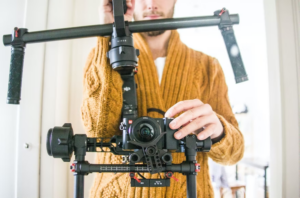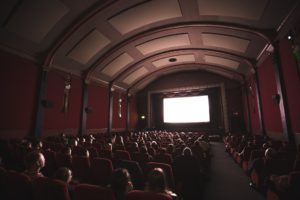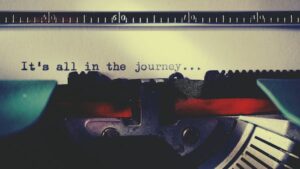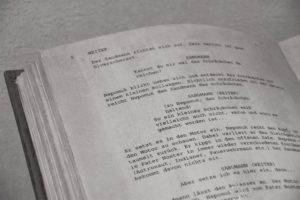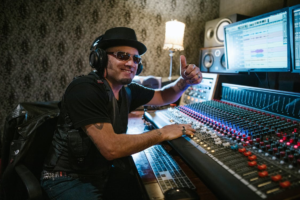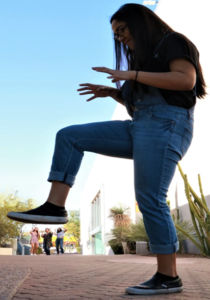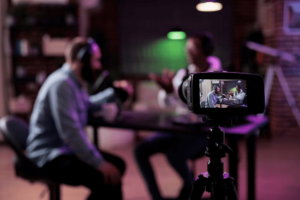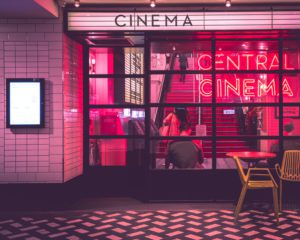The Kuleshov effect is the idea that two shots in a sequence are more impactful than a single shot by itself. This effect is a cognitive event that allows viewers to derive meaning from the interaction of two shots in sequence. Kuleshov believed that the interaction of shots in filmmaking was what differentiated cinema from photography, as photographs are single shots in isolation that don’t allow viewers to derive the same meaning.
Who Is Kuleshov?
Lev Kuleshov was a Russian filmmaker who wanted to create a distinction between the various artistic mediums, including cinema, literature, theater, and photography. He was fascinated by the power film editors had to manipulate the emotions of the audience. The question he posed is, “what differentiated cinema from other mediums?” and he believed the answer was how the materials presented were organized. Thus, the Kuleshov effect was born and continues to influence modern filmmaking more than a century later.
In addition to working as a filmmaker, Kuleshov is also considered to be one of the earliest theorists who focused on film. He posed his question about differentiating forms of artistic mediums in 1910, defining the effect he would have on film. Kuleshov directed his first film in 1917, worked alongside a documentary crew that covered the Russian Civil War, and taught early Soviet film courses at the National Film School.
How Did Kuleshov Prove His Effect?
More than a decade after proposing his question, Kule shov demonstrated the effect by setting up a series of demonstrations where he cut between the same shot of a man and a shot of something else to determine what emotions each would convey. The first was the man followed by a shot of a child in a casket, the second was the man and a bowl of soup, and the third was man followed by a woman lying on a couch. Respectively, these corresponding shots conveyed sadness, hunger, and lust.
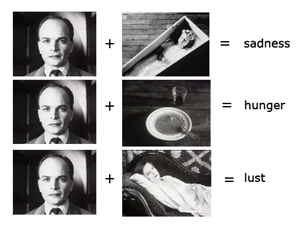
In creating this demonstration , Kuleshov implied that the man in the shot was looking at what was juxtaposed with it, even if that was not actually the case. Even in his earliest demonstration, Kuleshov used the same shot of a man with his facial expression unchanged. What changed was the perception of his expression when paired with another shot that generated emotion in the audience.
This effect transformed the process of creating films, as those involved in the process found they could elicit just about any reaction by editing and piecing shots together. They found that shots sewn together in the editing phase of filmmaking can manipulate time, space, and the viewer’s reaction.
Why the Kuleshov Effect Still Matters
The effect has continued to influence the cinema industry far beyond Kuleshov’s initial proposal and even his lifespan. From what Kuleshov proved in his demonstrations, new editing techniques and camera angles were born.
Filmmakers capitalized on the ability to evoke emotion based on their shot choice and editing capabilities. Steven Spielberg is a famous director that consistently relies on this effect in his films.
Alfred Hitchcock and the Kuleshov Effect
Alfred Hitchcock, a legendary film director, relied heavily on the Kuleshov effect. Hitchcock used Kuleshov’s demonstration but took it a bit further, adjusting the expression of the subject in the first image of each series. His adaptation, which he referred to as “pure cinema,” included three shots:
- Close-up
- Point-of-view
- Reaction
This adjustment implied that the audience doesn’t necessarily need a blank slate to assign emotions to the character, but rather the effect is more heavily based on what the character sees in the juxtaposed shot.
“Rear Window”
Hitchcock’s “Rear Window” extensively relies on the Kuleshov effect to create the tension that builds throughout the film. Entire scenes switch between the main character, played by Jimmy Stewart, and what he sees through his window, generating various emotions as the audience witnesses his point of view. Stewart complained after the film was produced that the performance he gave was different than how his character was portrayed due to this editing technique.
“Psycho”
Another Hitchcock thriller, “Psycho” uses the Kuleshov effect in the famous shower scene. The understanding of what took place, the stabbing of Janet Leigh’s character, is only implied as the audience sees only three frames of a knife piercing flesh. The view switches from Leigh to the killer armed with the knife, which creates this effect to evoke fear and tension in the viewer.
Examples of The Kuleshov Effect
You can see other examples of the Kuleshov effect in films from the last hundred years, as well as use this theory to inspire your own filmmaking process.
“Se7en”
A scene in “Se7en” cuts between what is inside a box to the reactions of each character in the scene, each of which is drastically different from the others. In order to understand the scene and what will come next, the audience needs to see the reaction to what is in the box.
“Silence of the Lambs”
Kuleshov’s theory is in full effect in “Silence of the Lambs,” generating tension between characters as the scene is set for a thrilling reveal.
This particular sequence also generates a unique reaction among most viewers, as they believed one thing to be true only to find that the opposite was the case.
“Inside Out”
The Kuleshov effect is even apparent in children’s films, including Pixar’s “Inside Out.” The audience sees Riley watching TV, and through the reaction of the character Fear, she begins to react to the scene as well. We switch back and forth between Riley, Fear and the other emotions, and the TV to see the escalation.
“Arrival”
In “Arrival,” the audience sees flashes of the protagonist’s life as the starting scene. The juxtaposition of scenes evokes emotions as the audience learns that Louise is in mourning, having lost a child to cancer, and later is recruited to communicate with aliens with her linguistics expertise. The sadness assumed of the main character paints her in a different light, one that changes as the story continues.
“The Dark Knight Rises”
In “The Dark Knight Rises,” the final installment in Christoper Nolan’s “Batman” franchise, the audience watches as Catwoman witnesses Batman being beaten by Bane, the film’s main villain. The juxtaposition of her point of view and the sorrowful scene evokes regret.
“Close Encounters of the Third Kind”
Steven Spielberg is a master of the Kuleshov effect in his films, including “Close Encounters of the Third Kind.” One of his staple shots is the “Spielberg Face,” which is a close-up reaction shot to something the character sees, generating a reaction from the audience.
View additional examples of the Kuleshov effect in many popular films.
Subverting the Kuleshov Effect
In “Raiders of the Lost Ark,” Indiana Jones searches for Marion and her captor through the marketplace. Just as he thinks he’s on the trail, he stops and scans the area with a shocked look. It’s only when director Steven Spielberg shows us what he’s looking at — a sea of baskets just like the one Marion was captured in. Then the audience can feel the dread or panic that Indy might be feeling.
Spielberg handles the effect similarly in “Munich.” Eric Bana’s character in “Munich” tries to return to normal life, but can only envision the acts he’s committed in an attempt to seek revenge.
Evidence of the effect is in “Jurassic Park.”
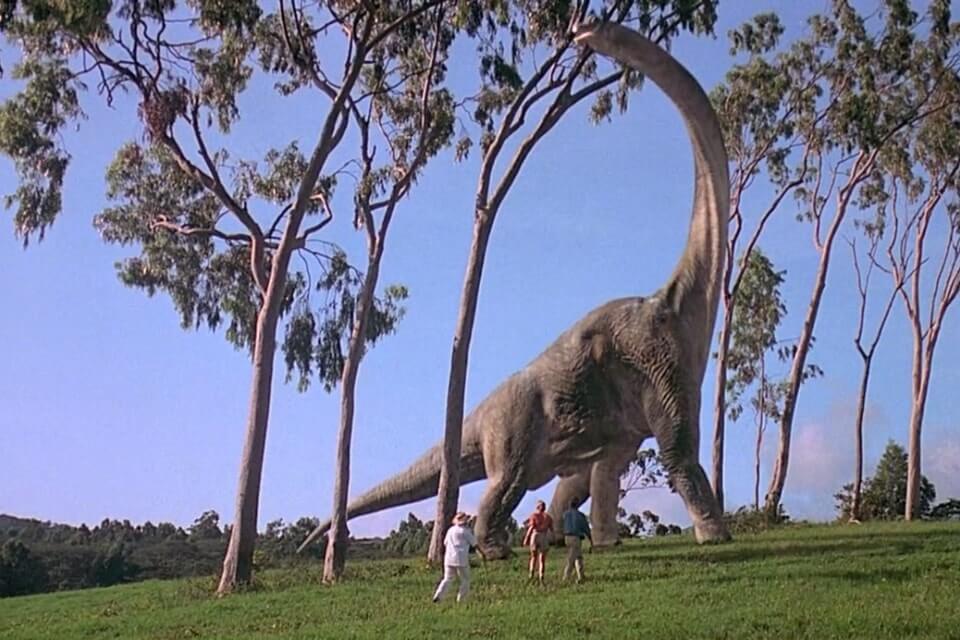 Scene from “Jurassic Park”
Scene from “Jurassic Park”
The Kuleshov effect portrays the scale of the dinosaurs.
A filmmaker is ultimately in control of the audience and their reaction to the experience of watching a film, and a good filmmaker respects, subverts, and exploits that control when editing scenes together.
You can learn more about the Kuleshov effect and how you can improve your skills by applying to the Nashville Film Institute here.
